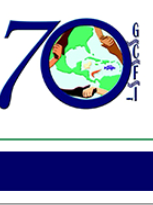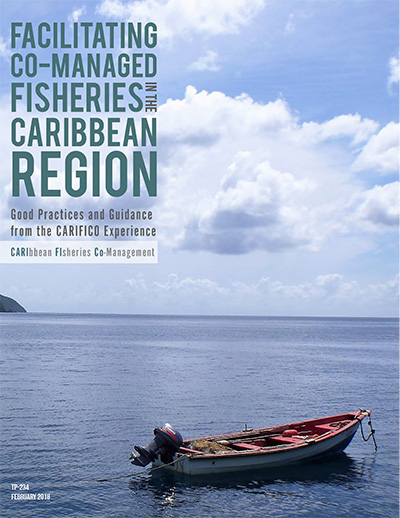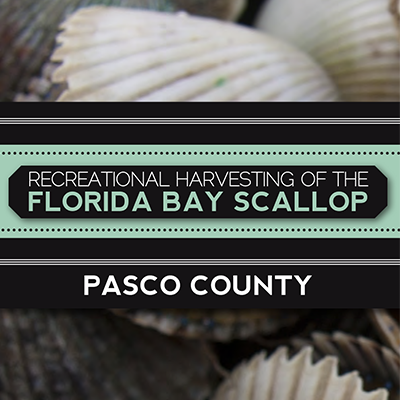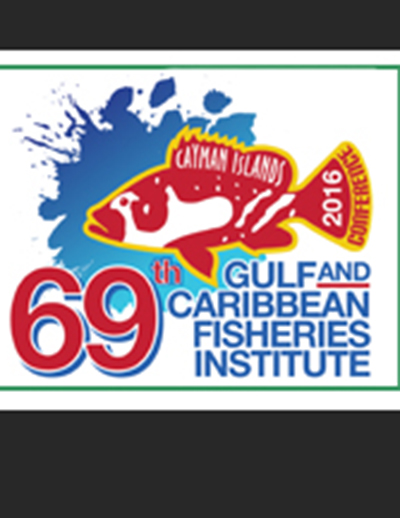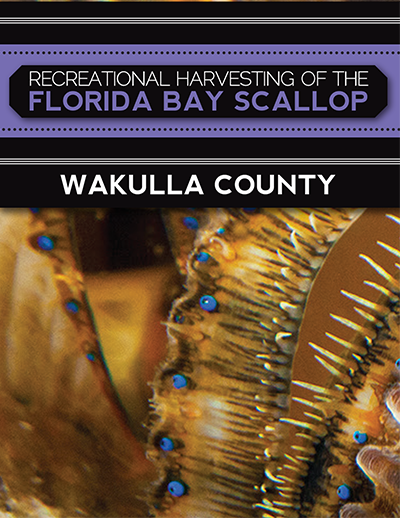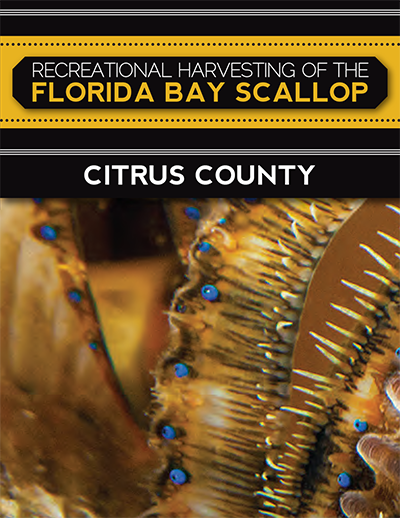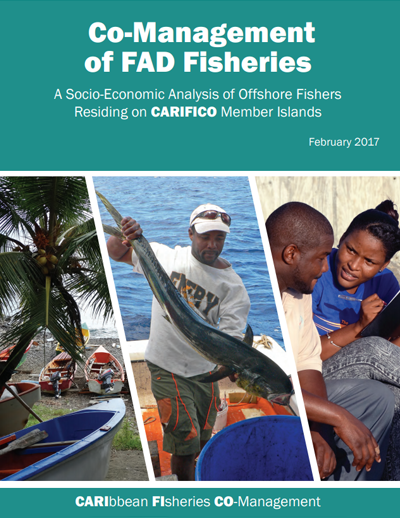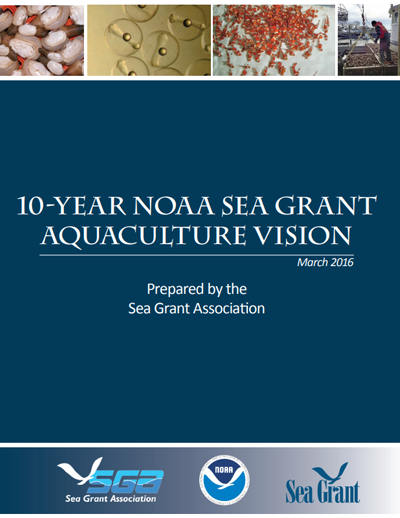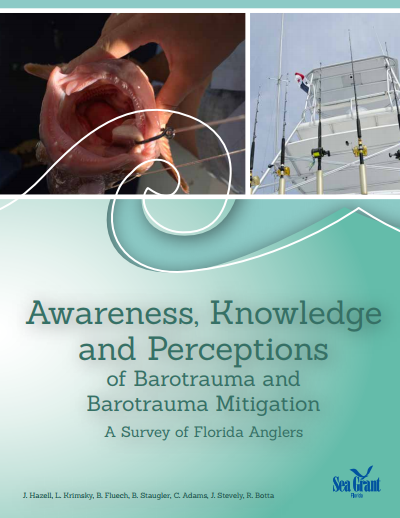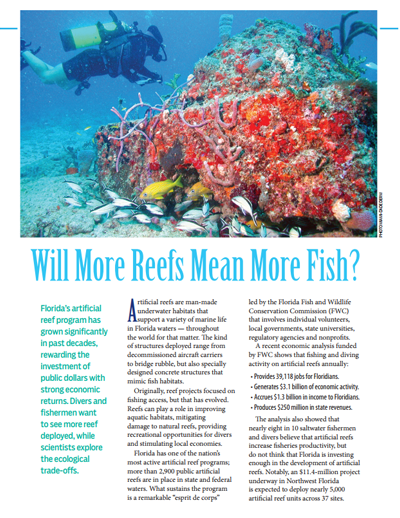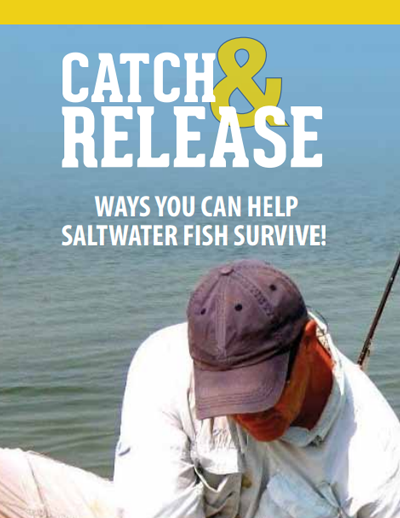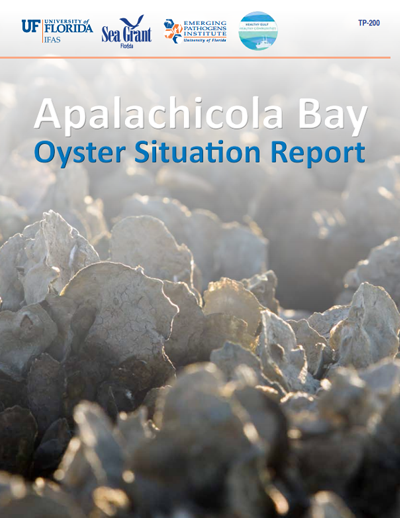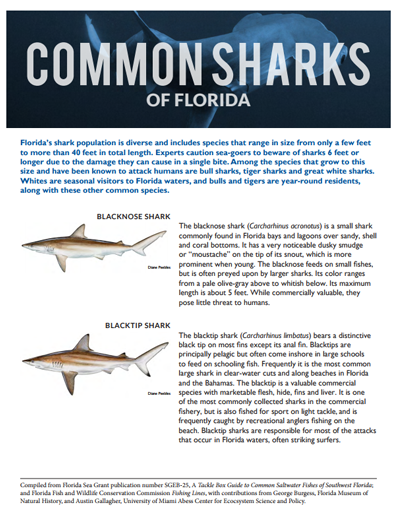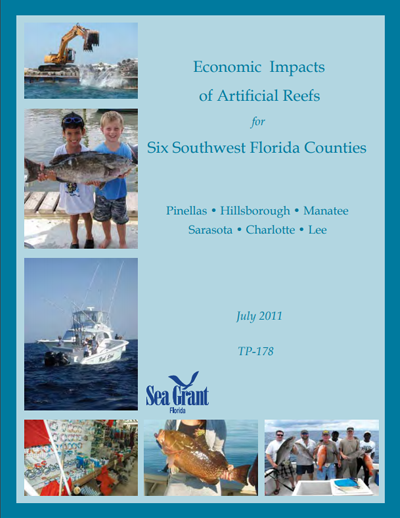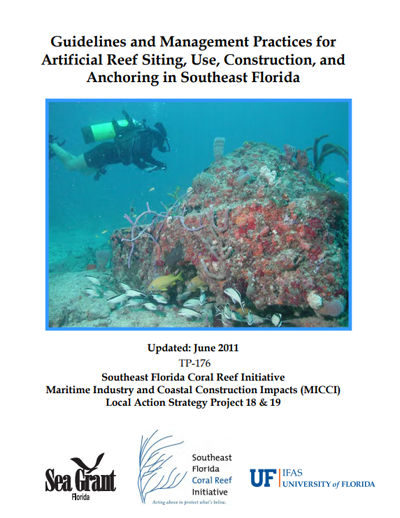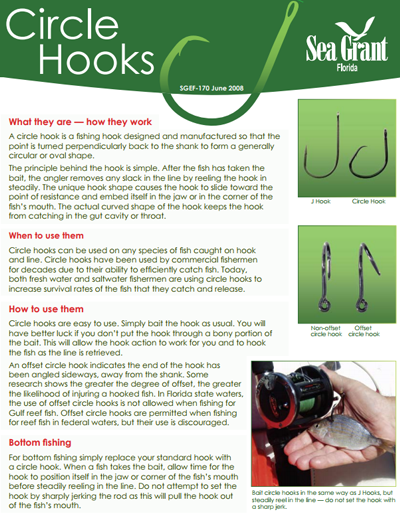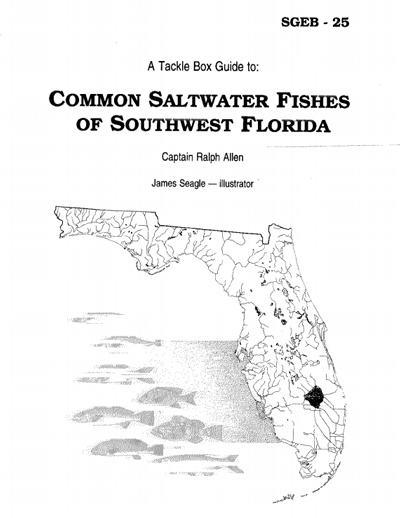To order publications, email the publication number and title to info@flseagrant.org. Be sure to include your mailing address and phone number.
Proceedings of the 70th Gulf and Caribbean Fisheries Institute
November 2018
From November 6 – 10, 2017, more than 400 fisheries biologists, students, scientists, marine protected area (MPA) researchers, managers, fishers, and representatives from various government departments and conservation groups from Caribbean countries met in Merida, Yucatán, México to explore how they might build networks of people, and institutions, to further the conservation of marine resources, habitats, and fisheries throughout the region.
Barotrauma and the Successful Release of Fish Caught in Deep Water
If you catch a fish you aren't going to keep, help it survive and get back to the deep! This brochure shows you how!
SGEF-250
September 2018
For fish caught in deeper water, part of successful release involves relieving barotrauma in fish whose swim bladders have expanded during their ascent to the surface, leaving them too buoyant to descend on their own. This publication provides an overview of barotrauma and barotrauma mitigation methods.
Facilitating Co-Managed Fisheries in the Caribbean Region
Good practices and guidance from the CARIFCO experience.
TP-234
February 2018
This report documents outcomes from the Caribbean Fisheries Co-management Project (CARIFICO) – a partnership between the Japanese government, the Caribbean Regional Fisheries Mechanism (CRFM) and participating Caribbean islands. The goal of the project was to enhance the profitability and to stimulate shared-governance of the growing offshore fishery, which is increasingly reliant on fish aggregating devices (FADs).
Recreational Harvesting of the Florida Bay Scallop: Pasco County
SGEF-253
May 2018
A full-color map identifying access routes to the boat ramps and marinas in Pasco County, plus the latest information on scallops and scalloping, the recommended equipment you will want to bring, and a few tasty recipes for preparing Florida’s best summertime catch.
Proceedings of the 69th Gulf and Caribbean Fisheries Institute
This publication is the latest from the Gulf and Caribbean Fisheries Institute.
October 2017
From November 6 – 11, 2016, more than 300 fisheries biologists, students, scientists, marine protected area (MPA) researchers, managers, fishers, and representatives from various government departments and conservation groups from Caribbean countries met in Grand Cayman, Cayman Islands to explore how they might build networks of people, institutions, and protected areas to further the conservation of marine resources, habitats, and fisheries throughout the region.
Recreational Harvesting of the Florida Bay Scallop: Wakulla County
SGEF-244
May 2018
A full-color map identifying access routes to the boat ramps and marinas in Wakulla County, plus the latest information on scallops and scalloping, the recommended equipment you will want to bring, and a few tasty recipes for preparing Florida’s best summertime catch.
Recreational Harvesting of the Florida Bay Scallop: Citrus County
SGEF-233
May 2018
A full-color map identifying access routes to the boat ramps and marinas in Citrus County near Homosassa and Crystal River, plus the latest information on scallops and scalloping, the recommended equipment you will want to bring, and a few tasty recipes for preparing Florida’s best summertime catch.
Recreational Harvesting of the Florida Bay Scallop: Hernando County
SGEF-235
May 2018
A full-color map identifying access routes to the boat ramps and marinas in Hernando County, plus the latest information on scallops and scalloping, the recommended equipment you will want to bring, and a few tasty recipes for preparing Florida’s best summertime catch.
Recreational Harvesting of the Florida Bay Scallop: Steinhatchee and Keaton Beach Areas, Taylor County
SGEF-232
May 2018
A full-color map identifying access routes to the boat ramps and marinas in southern Taylor County near Steinhatchee and Keaton Beach, plus the latest information on scallops and scalloping, the recommended equipment you will want to bring, and a few tasty recipes for preparing Florida’s best summertime catch.
Co-Management of FAD Fisheries: A Socio-Economic Analysis of Offshore Fishers residing on CARIFCO Member Islands
February 2017
This report documents a study of offshore fishers on six islands participating in Caribbean Fisheries Co-management Project (CARIFICO) – a partnership between the Japanese government, the Caribbean Regional Fisheries Mechanism (CRFM) and participating Caribbean islands. The goal of the project was to enhance the profitability and to stimulate shared-governance of the growing offshore fishery, which is increasingly reliant on fish aggregating devices (FADs). In this report, you will find insight into fisher’s livelihoods prior to and during the CARIFICO project, as well as factors that influence fishers’ decisions to set and maintain private and public FADs. Opportunities for strengthening co-management of FAD fisheries are derived from the study results.
68th Proceedings of the Gulf and Caribbean Fisheries Institute
Volume 68
November 2015
From November 9 – 13, 2015, more than 350 fisheries biologists, students, scientists, managers, fishers, and representatives from various government departments and conservation groups from Caribbean countries met in Ciudad de Panamá (Panamá) to explore how they might build networks of people, institutions, and protected areas to further the conservation of marine resources, habitats, and fisheries throughout the region. This publication outlines major outcomes of the sessions and includes more than 100 research papers that were presented.
10 Year NOAA Sea Grant Aquaculture Vision
Sea Grant will likely be investing $50 million to $100 million in aquaculture research and technology transfer over the next 10 years. A clear vision will help guide strategic investments to support and expand the aquaculture industry. This document explains Sea Grant’s appropriate roles over the next 10 years, and priority research strategies leading to sustainable economic development, environmental conservation and social well-being.
Awareness, Knowledge and Perceptions of Barotrauma and Barotrauma Mitigation: A Survey of Florida Anglers
TP-224
June 2016
As part of its catch and release outreach program, Florida Sea Grant conducted this survey to measure Florida saltwater anglers’ awareness, knowledge and perceptions of barotrauma. The survey was designed to provide insight into the level of understanding Florida anglers have regarding the concept of barotrauma, their recognition of it, their experience and confidence in using existing barotrauma mitigation tools, and their preferred methods of learning about barotrauma.
Modeling Lionfish Management Strategies on the West Florida Shelf: Workshop Summary and Results
July 2015
This is a summary of a workshop at the University of Florida that brought together students, professors and other professionals to model various lionfish management strategies. The team worked with an Ecopath with Ecosim model to evaluate how reef fish management strategies and lionfish removal efforts would be expected to influence lionfish impacts on the West Florida Shelf ecosystem. This white paper summarizes the key findings from the workshop and will be followed by a peer-reviewed journal article, as well as future collaborations.
Florida Trend Report: Will More Reefs Mean More Fish?
May 2015
This report is part of a series published in Florida Trend by Florida Sea Grant which discusses the state’s artificial reef program, and what Florida Sea Grant is doing to help guide the science behind reef deployment.
Toward a Sustainable Caribbean FAD Fishery
TP-214
September 2015
This project builds on an initial investigation into the effects of different governance arrangements on the profitability and sustainability of Caribbean artisanal FAD fishing. In this study fishing lures were introduced and tested as an addition to or replacement for the use of small and juvenile fish taken at FADs for use as bait to target larger pelagic fish. Having the lures allowed fishing to also occur while transiting to and from FADs. Lures also provided a back-up that allowed fishing to occur during occasions when baitfish, normally caught at FADs, could not be secured. These results suggest that lures can be effective auxiliary gear in the Caribbean FAD fisheries but are unlikely to replace the use of bait.
2015 Florida Artificial Reef Summit Abstracts and Program
TP-212
January 2015
Florida has one of the most active artificial reef programs in the nation. The Florida Artificial Reef Summit has become a unique event to learn about the latest in artificial reef research and management strategies. The summit happens only once every 4 to 6 years. From January 14-16, 2015, artificial reef managers, researchers, natural resource managers, and students from around the world met to discuss issues relevant to artificial reefs and site development, fisheries management, ecology, restoration, permitting and regulations and more. This booklet contains the meeting summary, along with the abstracts of research presented at the Summit.
66th Proceedings of the Gulf and Caribbean Fisheries Institute
Volume 66
November 2013
From November 4 – 8, 2013, more than 420 fisheries biologists, students, scientists, marine protected area researchers, managers, fishers, and representatives from various government departments and conservation groups from Caribbean countries met in Corpus Christi, Texas, to explore how they might build networks of people, institutions, and protected areas to further the conservation of marine resources, habitats, and fisheries throughout the region. This publication outlines major outcomes of the sessions and includes more than 100 research papers that were presented.
Toward a Sustainable Caribbean FAD Fishery
TP-206
June 2014
In this analysis of the use, profitability and shared governance of fish aggregation devices on the island nation of Dominica, researchers use input from stakeholders to determine most profitable governance arrangements and identify best practices for sustainably using and co-managing FADs.
Catch and Release: Ways You Can Help Saltwater Fish Survive!
SGEF-202
Revised, December 2013
Releasing a fish safely with minimal harm is key to helping it survive. This fold-out brochure provides practical advice for fishermen who want to increase the survival rate of fish with proper handling during the landing and release. Includes an all-new section on deep-water release techniques for reef fish.
Apalachicola Bay Oyster Situation Report and Executive Summary
TP-200, full report
TP-201, executive summary
April 2013
The University of Florida Oyster Recovery Team describes conditions in Apalachicola Bay, Florida, prior to and after a historic collapse of the oyster fishery in 2012. The team, led by Florida Sea Grant director Karl Havens, reviews possible causes for the fishery collapse, and outlines a plan for future monitoring, research and fishery management.
Common Sharks of Florida
SGEF-203
Revised, July 2013
Offers illustrations and facts about the most common sharks encountered by beach goers and recreational anglers.
Economic Impacts of Artificial Reefs for Six Southwest Florida Counties
TP-178
July 2011
Swett, R.; C. Adams; S. Larkin; A. Hodges; T. Stevens
A University of Florida and Florida Sea Grant study measures the economic impact of artificial reefs in Pinellas, Hillsborough, Manatee, Sarasota, Charlotte and Lee counties. Artificial reefs pulled more than $253 million into the region during one year. Economic impacts by county are also available as one-page fact sheets:
SGEF-180, Manatee County
SGEF-181, Sarasota County
SGEF-182, Hillsborough County
SGEF-183, Pinellas County
SGEF-184, Charlotte County
SGEF-185, Lee County
SGEF-186, Southwest Florida
Guidelines and Management Practices for Artificial Reef Siting, Use, Construction, and Anchoring in Southeast Florida
TP-176
Revised, June 2011
Editors: Lindberg, W.; W. Seaman; D. Zimmerman
This document addresses a specific type of undersea construction that has impacted coral ecosystems but also offers a tool for repair of damage to them. That tool is the deployment of structures on the sea floor to serve as artificial reefs.
Understanding the Ecology of Artificial Reefs: No simple answer
SGEB-65
January 2010
Lindberg, W. and M. Schrope
This Q-and-A fact sheet discusses an often-asked question whether fish are merely attracted to artificial reefs from other areas—concentrating them at a known location for fishermen to catch—or if artificial reefs actually lead to the production of more fish.
Artificial Reef Summit: Abstracts and Program
TP-170
January 2010
Florida’s Marine Sponges: Exploring the Potential and Protecting the Resource
SGEF-169
November 2008
Stevely, J. and D. Sweat
Sponges are living, valuable residents of Florida’s coastal ecosystems, providing habitat that is essential to a myriad of marine creatures, including spiny lobsters, one of the state’s most important commercial fisheries.
Circle Hooks
SGEF-170
June 2008
A circle hook is a fishing hook designed and manufactured so that the point is turned perpendicularly back to the shank to form a generally circular or oval shape. This fact sheet describes when and how to use a circle hook. Also available in Spanish.
Venting: A Guide to Releasing Reef Fish with Ruptured Swimbladders
SGEF-162
January 2005
Novak, R.
This brochure identifies when caught fish need to be vented and outlines venting procedures and tools.
Circle Hooks (Spanish)
SGEF-109
March 2002
A circle hook is a fishing hook designed and manufactured so that the point is turned perpendicularly back to the shank to form a generally circular or oval shape. This fact sheet describes when and how to use a circle hook. Also available in English.
Harvest and Identification of Peeler Crabs
SGEB-39
June 1997
Otwell, S. and F. Lawlor
Identifies fishing gear needed and explains how to identify molting blue crabs, also known as peeler crabs.
A Tackle Box Guide to Common Saltwater Fishes of Southwest Florida (waterproof edition)
SGEB-25a
August 1993
Allen, R.
Identifies 86 species of fish commonly caught by saltwater anglers. For each species, important information about distinguishing features, biology/habitat and fishing methods is provided. The often confusing nicknames applied to each fish are noted, as well as the fish’s preferred common name.

